 |
Egypt
Abu Simbel
Temples at Abu Simbel
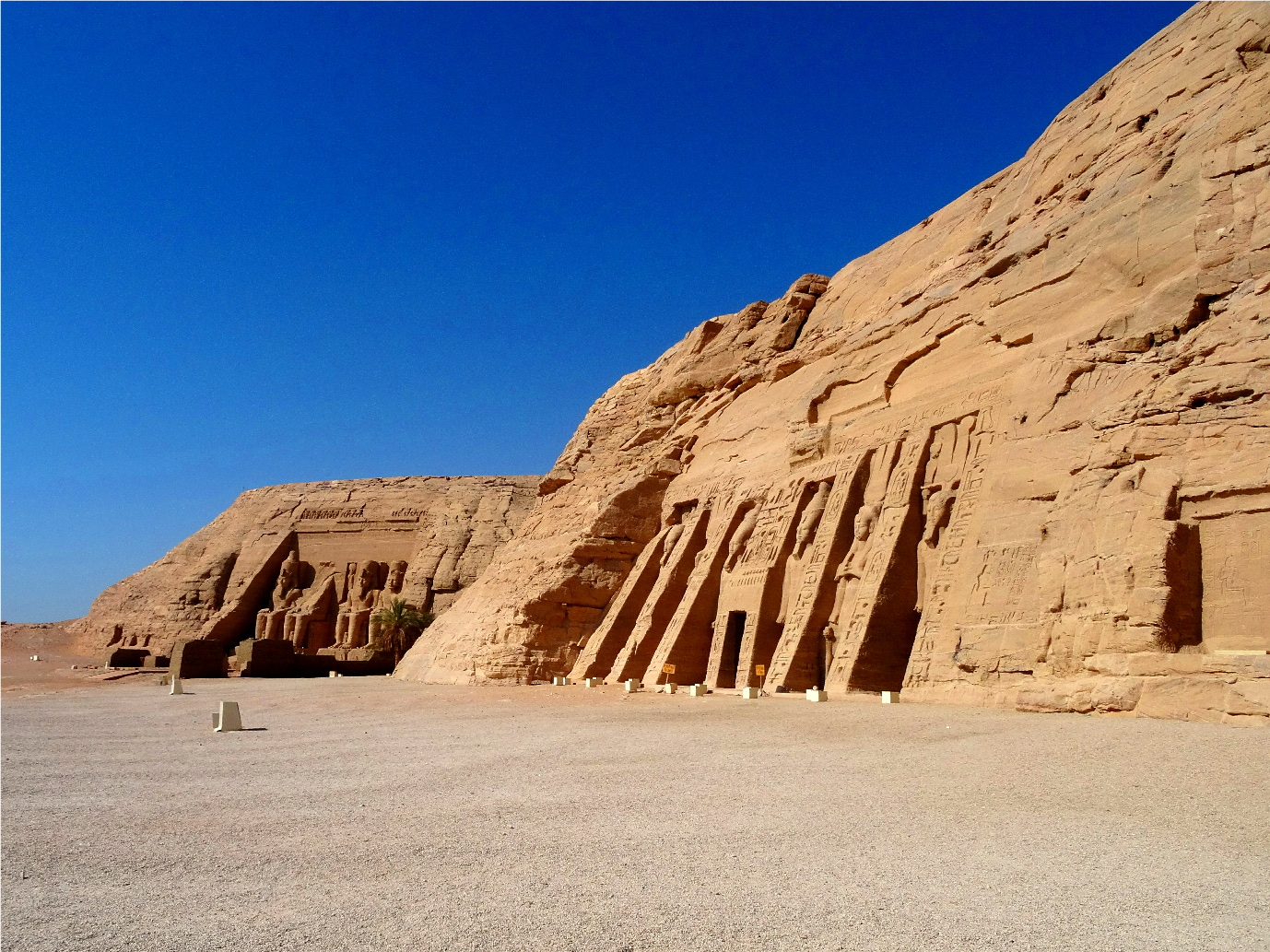
The temples of Abu Simbel consists of two temples which were originally carved out of the mountainside at the border of Southern Egypt and Nubia by the Pharaoh Ramesses II (the Great) (1279–13 BCE) to proclaim his greatness and commemorate the Battle of Kadesh fought between the Egyptians and the Hittites. It was also designed to proclaim the power and military might of Egypt and was placed there to impress any potential invaders. Like Philae (see above) the temples were dismantled and moved to a new location in the 1960’s in order to save them from being submerged by the waters of Lake Nasser by the construction of the Aswan High Dam. READ MORE
Cairo
The Pyramids of Giza
 The Pyramids are situated at Giza just outside Cairo and is one of the engineering marvels of all time and the only remaining wonder of the ancient world. Situated on the west bank of the Nile, which is associated with death, the pyramids are generally believed to be tombs for the Pharaohs or a resurrection machine for his rebirth. The first large Egyptian pyramid was the Step Pyramid at Saqqara, built during the third dynasty of the Old Kingdom to protect the body of the king Djoser who died around 2650 BC. READ MORE The Pyramids are situated at Giza just outside Cairo and is one of the engineering marvels of all time and the only remaining wonder of the ancient world. Situated on the west bank of the Nile, which is associated with death, the pyramids are generally believed to be tombs for the Pharaohs or a resurrection machine for his rebirth. The first large Egyptian pyramid was the Step Pyramid at Saqqara, built during the third dynasty of the Old Kingdom to protect the body of the king Djoser who died around 2650 BC. READ MORE
Esna
Esna Temple
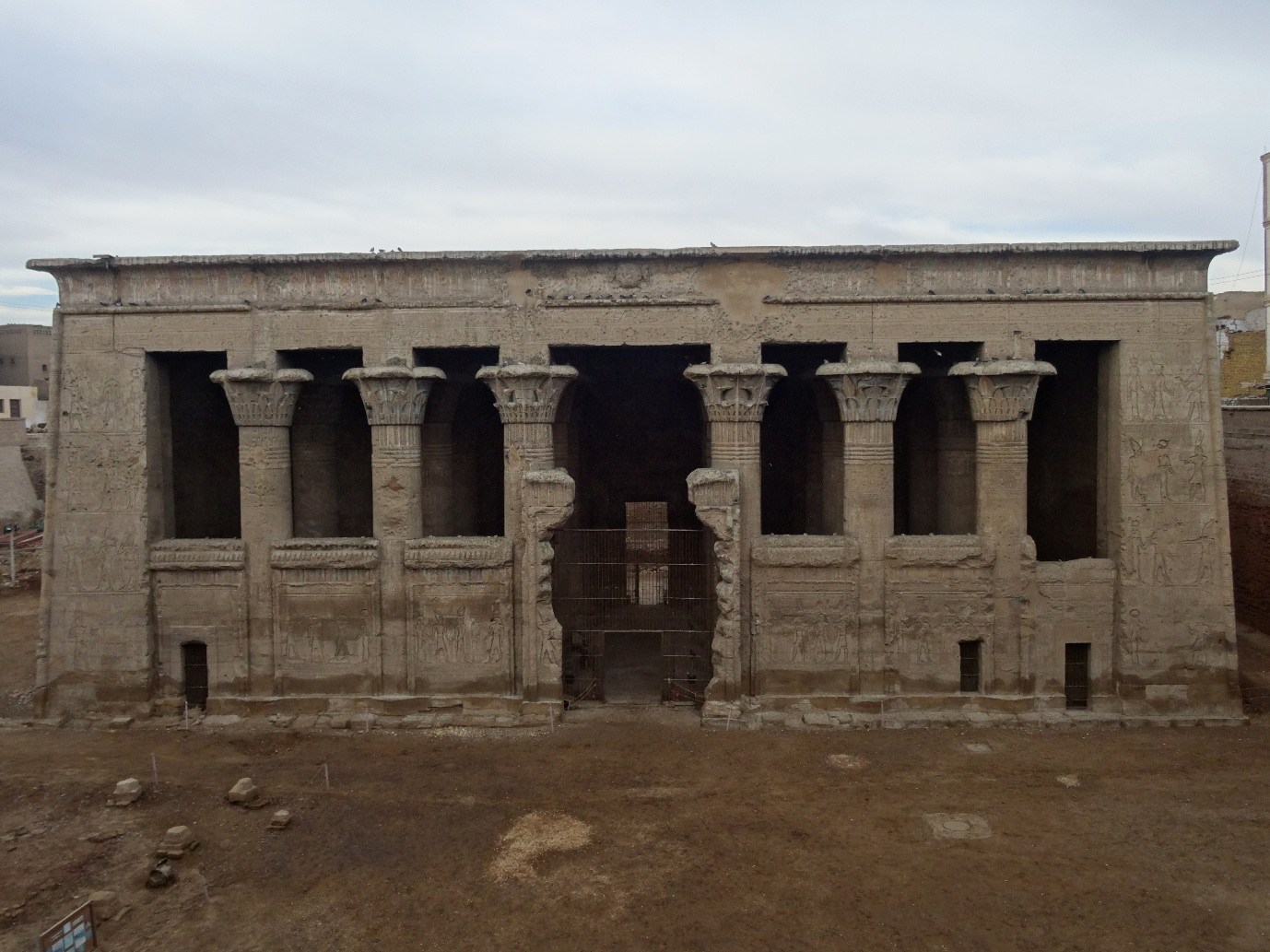
The Temple of Khnum (Khoum) is located in the centre of the town of Esna which lies on the west bank of the River Nile, approximately 35 miles from Luxor. Esna was known as Lunyn or Ta-Senet, by the Egyptians and Latopolis by the Greeks.
Originally dating back to the 18th Dynasty when it was constructed by Tuthmosis III; around the 1500’s early 1400 BC it fell into disrepair and the existing temple was reconstructed during the Ptolemaic and Roman periods (332 BC to 641 AD) and was one of the last temples built in Egypt. READ MORE
Kom Ombo
Kom Ombo Temple
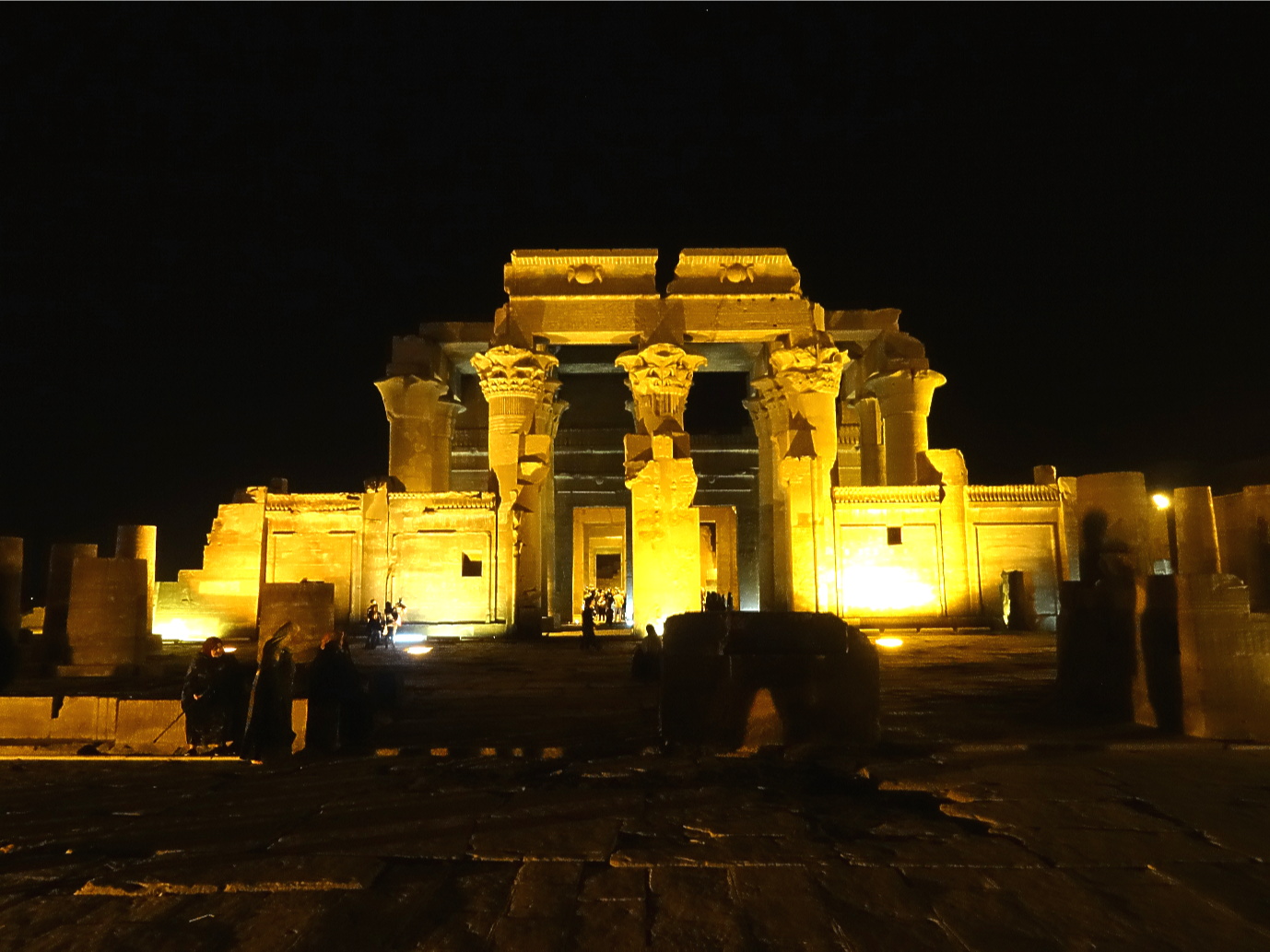
The Temple of Sobek and Hathor (Haroeris) is located on the bank of the Nile River between Edfu and Aswan at Kom Ombo, although the temple is better known as the Kom Ombo Temple.
Little is known of the town of Kom Ombo during the Dynastic Period, although it was known to have originally have been called Nubt, meaning City of Gold. It became prominent during the Ptolemaic Period due to its location, where it exercised some control over the trade routes from Nubia, although changes in agriculture techniques are also thought to have influenced its rise. READ MORE
Luxor
Temple of Karnak
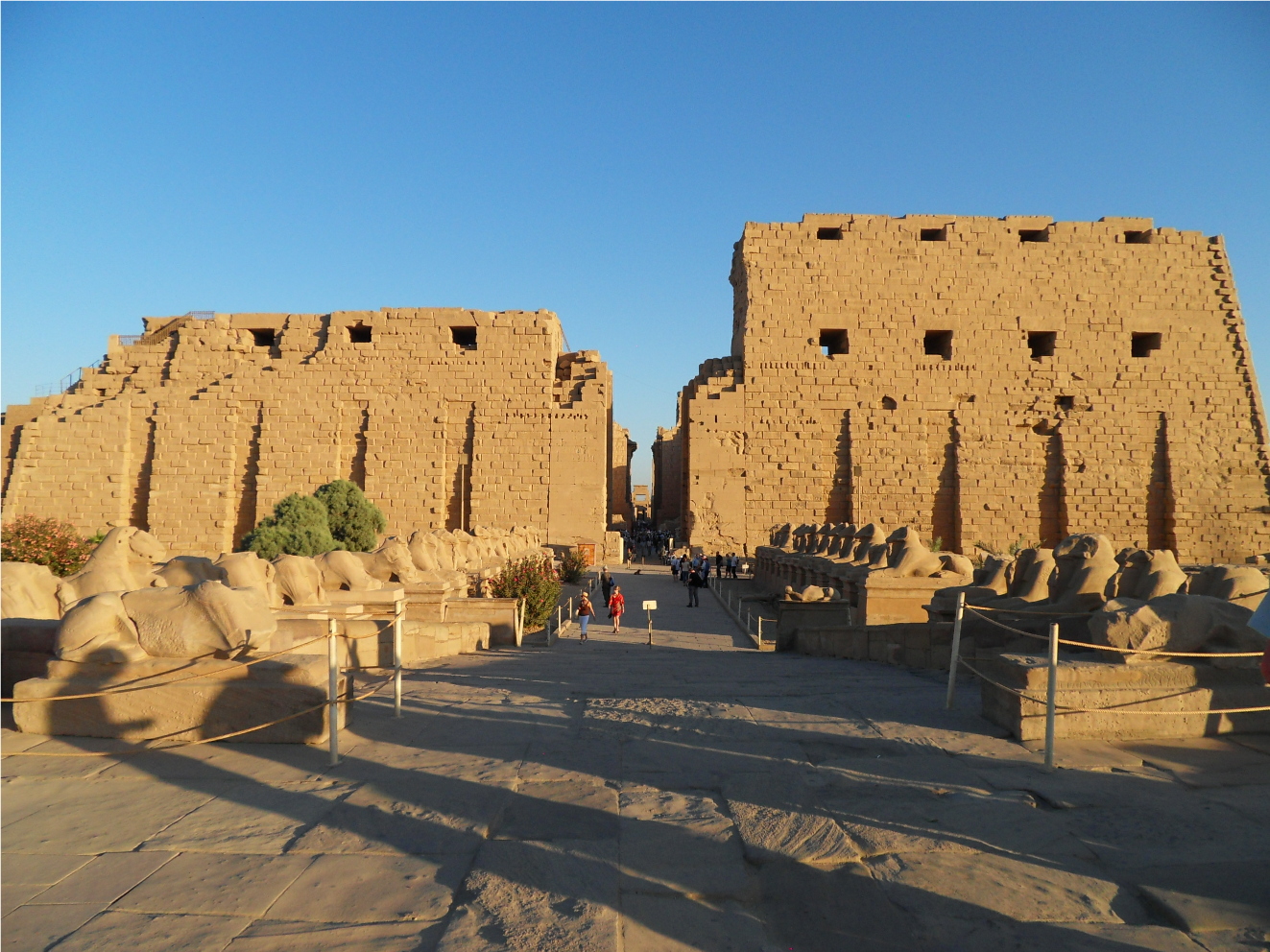 The Temple of Karnak is not a single temple but a temple complex that developed over a period of 1500 years. It is one of the largest religious complexes in the world and consists of gates, pillars, halls, obelisks, statues and a sacred lake. Each of the Pharaohs would make further additions and then remove those erected by their predecessors; thereby replacing them with their own. In order to make the people believe that they were the builders, they would remove predecessors’ cartouches and replace them with their own. The Temple played a significant part in the Egypt of the Pharaohs, being situated in what was Thebes, which was then the capital of Egypt. READ MORE The Temple of Karnak is not a single temple but a temple complex that developed over a period of 1500 years. It is one of the largest religious complexes in the world and consists of gates, pillars, halls, obelisks, statues and a sacred lake. Each of the Pharaohs would make further additions and then remove those erected by their predecessors; thereby replacing them with their own. In order to make the people believe that they were the builders, they would remove predecessors’ cartouches and replace them with their own. The Temple played a significant part in the Egypt of the Pharaohs, being situated in what was Thebes, which was then the capital of Egypt. READ MORE
Luxor Temple
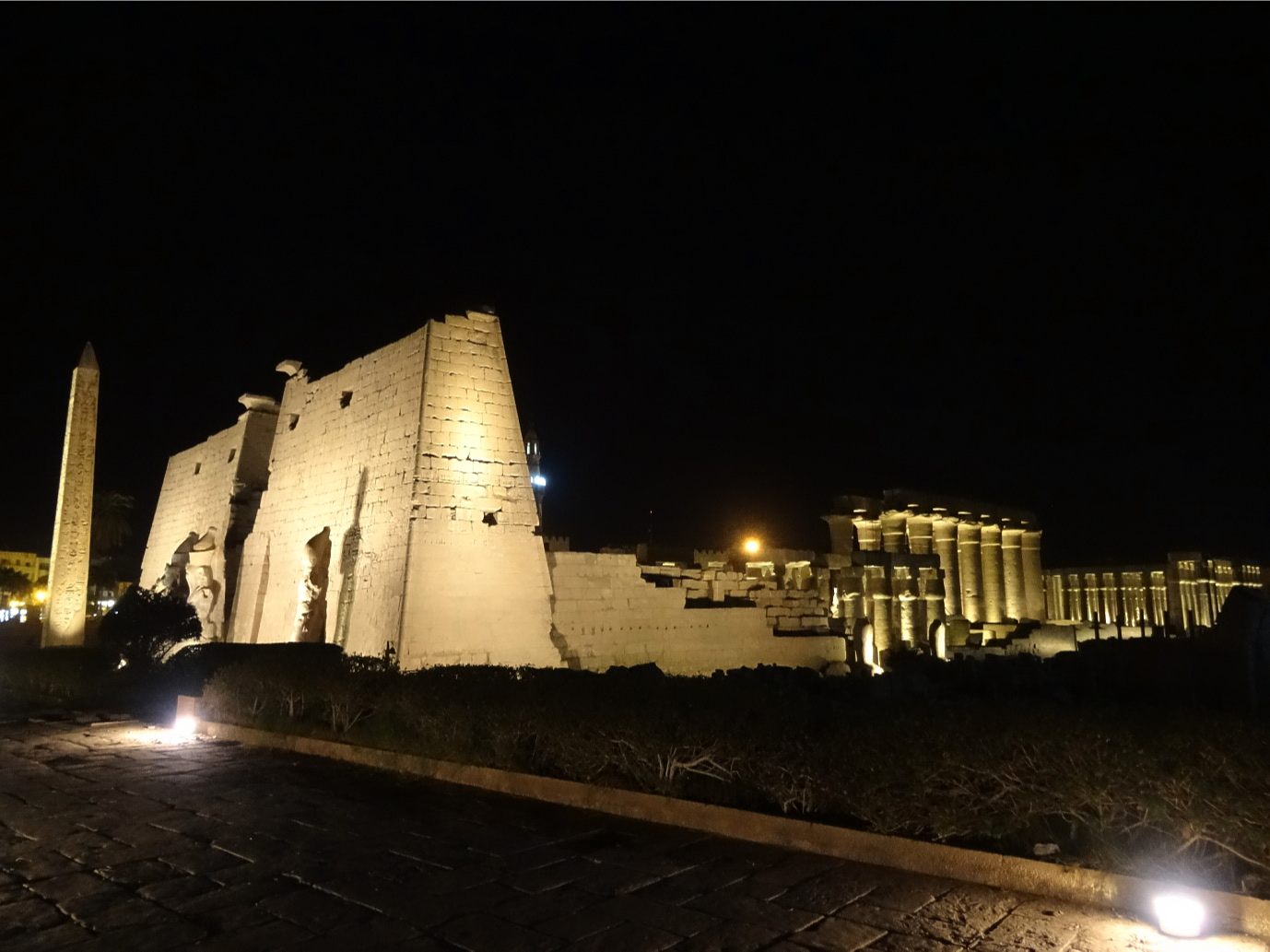
The city which is now called Luxor, was known as Thebes in Ancient Egypt - although it was also known as Waset to the Ancient Egyptians. It was the capital of Egypt from 2040 BCE when Mentuhotep II (2061-2010 BCE) of the 11th Dynasty (the Middle Kingdom) reunited Egypt following the civil war; prior to this it was a small trading post. It was renamed Luxor following the Arab invasion in the 7th century AD.
Temple of Hatshepsut
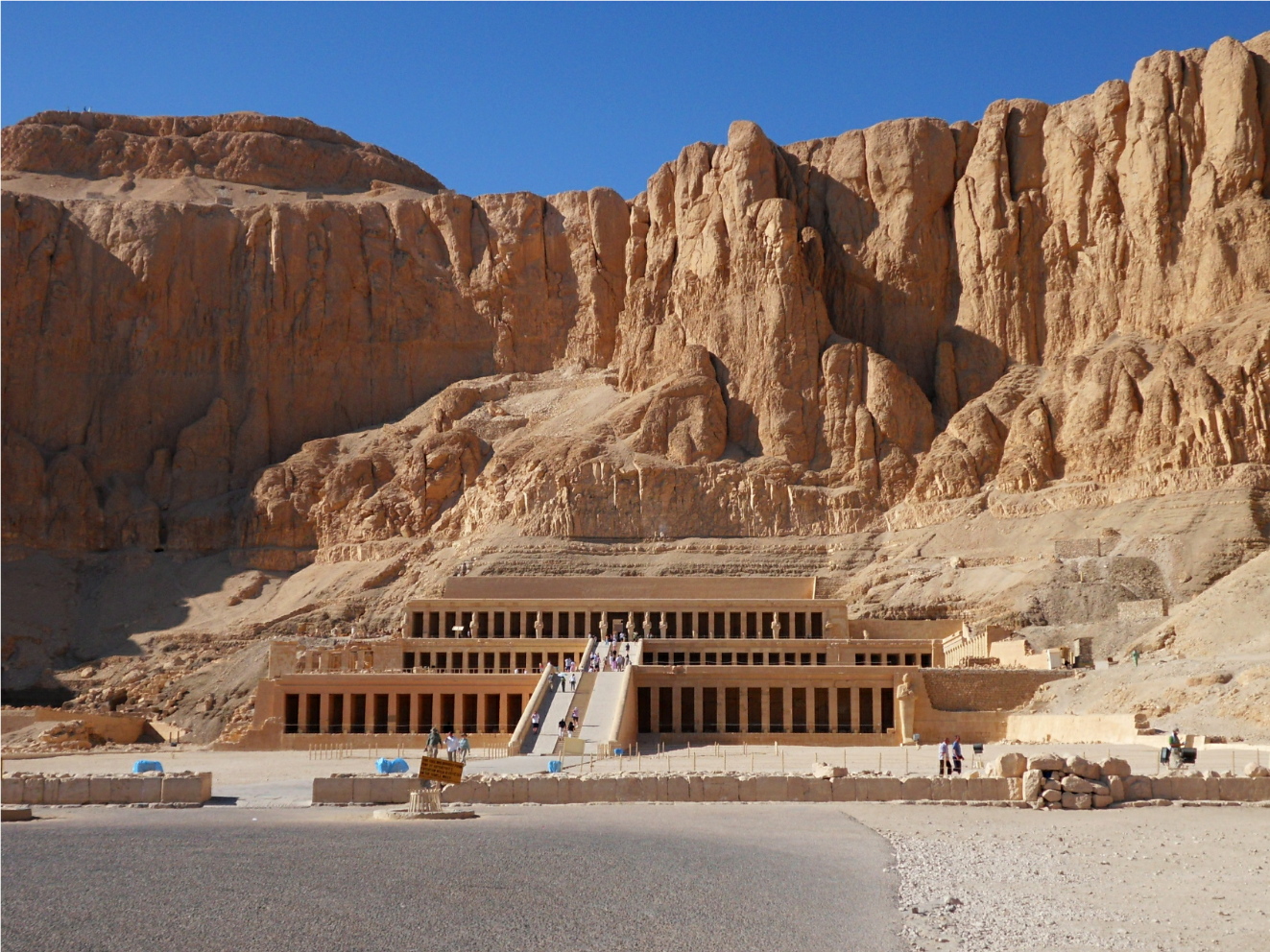 In Ancient Egypt there were two types of temple: Cult Temples, these were not places of worship in the modern sense since the people did not take part in religious rituals, that was the job of the priests as only they, or the Pharaoh, were allowed into the temple to carry out the rites. These were centred on a statue of the god housed in a shrine in the innermost part of the sanctuary. An example of a Cult temple is Karnak listed above. Mortuary Temples was the place where rituals would be performed in order to ensure the dead Pharaoh reached the afterlife. READ MORE In Ancient Egypt there were two types of temple: Cult Temples, these were not places of worship in the modern sense since the people did not take part in religious rituals, that was the job of the priests as only they, or the Pharaoh, were allowed into the temple to carry out the rites. These were centred on a statue of the god housed in a shrine in the innermost part of the sanctuary. An example of a Cult temple is Karnak listed above. Mortuary Temples was the place where rituals would be performed in order to ensure the dead Pharaoh reached the afterlife. READ MORE
Philae
Temple of Philae
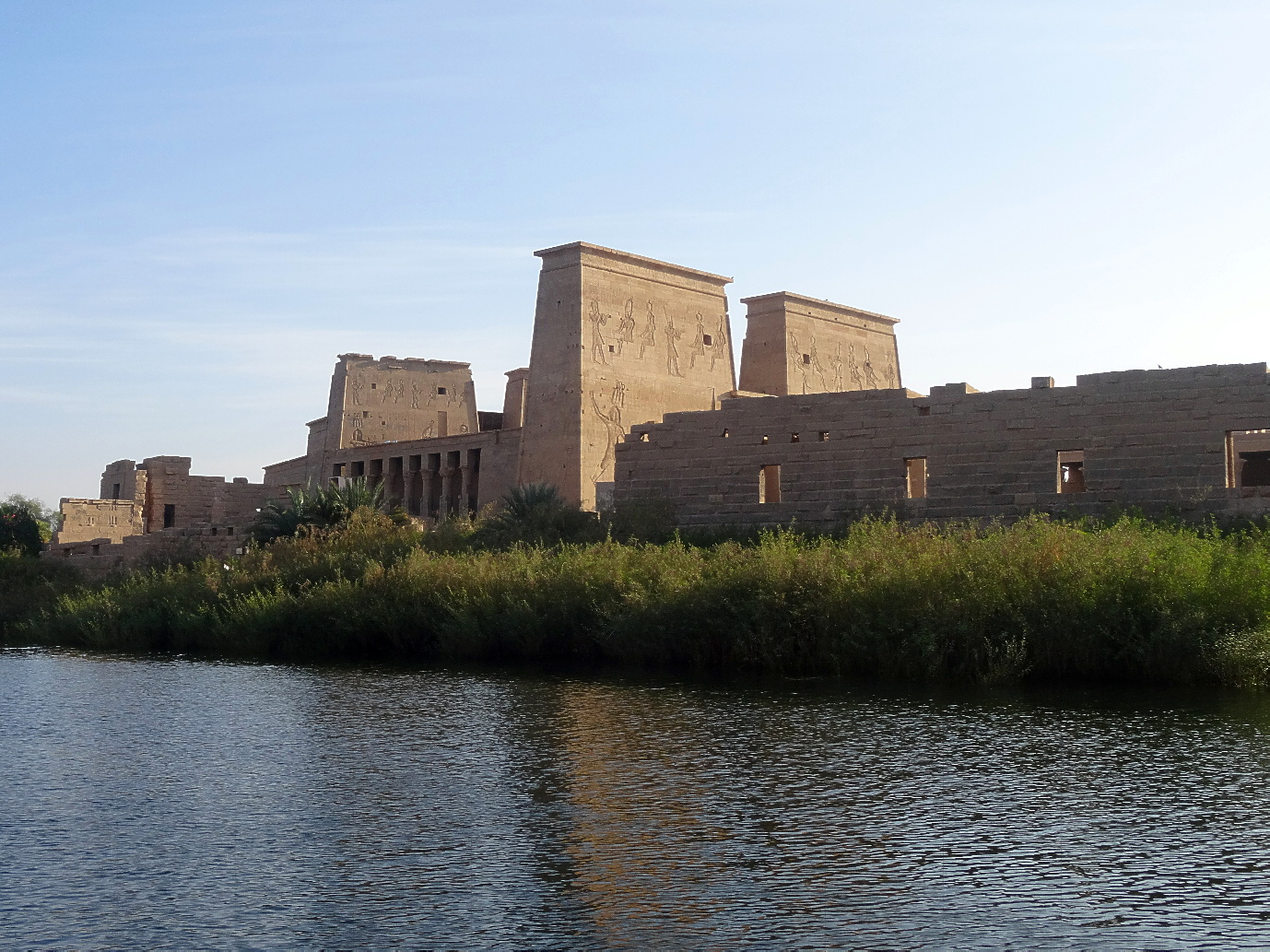 The Temple of Philae is located on the island of Agilka near the first cataract (shallow white water rapids) on the River Nile and is dedicated primarily to the Egyptian Goddess, Isis, although her consort Osiris and her son Horus were also worshipped there. Considered to be the burying-places of Osiris, Philae became a place of pilgrimage. Temples and shrines dedicated to other deities, including Hathor and Harendotes were also constructed there. READ MORE The Temple of Philae is located on the island of Agilka near the first cataract (shallow white water rapids) on the River Nile and is dedicated primarily to the Egyptian Goddess, Isis, although her consort Osiris and her son Horus were also worshipped there. Considered to be the burying-places of Osiris, Philae became a place of pilgrimage. Temples and shrines dedicated to other deities, including Hathor and Harendotes were also constructed there. READ MORE
Saqqara
The Step Pyramid
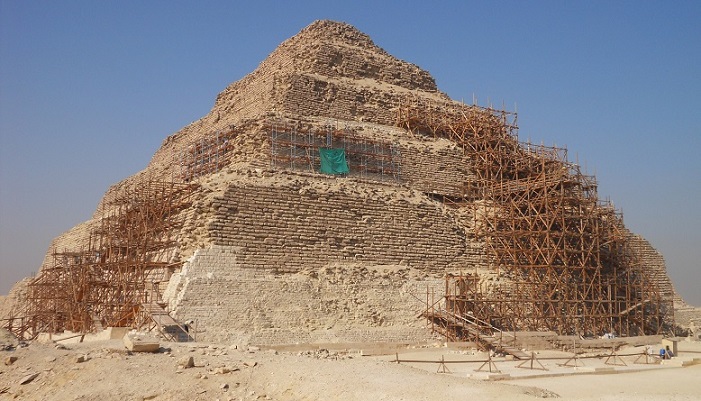 The Step Pyramid at Saqqara is situated 20 km from Giza near Cairo. Built for the Pharaoh Djoser the first king of the Third Dynasty as his tomb and mortuary complex it is surrounded by a panelled, bastion wall of white limestone, which imitates bound bundles of reeds and has a number of symbolic doors, although it only has one functional entrance. Originally with 9 metres (30 feet) high walls, the complex covers an area of approximately 560 x 275 metres. Surrounding the wall is a trench which measures 750 m long and 40 m wide which was dug in the underlying rock, around the sides the trench was decorated with niches. READ MORE The Step Pyramid at Saqqara is situated 20 km from Giza near Cairo. Built for the Pharaoh Djoser the first king of the Third Dynasty as his tomb and mortuary complex it is surrounded by a panelled, bastion wall of white limestone, which imitates bound bundles of reeds and has a number of symbolic doors, although it only has one functional entrance. Originally with 9 metres (30 feet) high walls, the complex covers an area of approximately 560 x 275 metres. Surrounding the wall is a trench which measures 750 m long and 40 m wide which was dug in the underlying rock, around the sides the trench was decorated with niches. READ MORE
|
 |



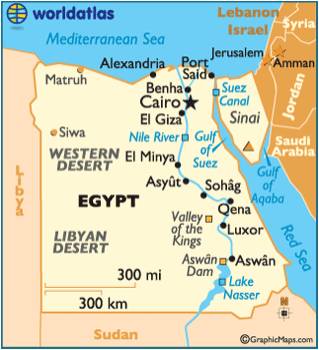




 The Temple of Philae is located on the island of Agilka near the first cataract (shallow white water rapids) on the River Nile and is dedicated primarily to the Egyptian Goddess, Isis, although her consort Osiris and her son Horus were also worshipped there. Considered to be the burying-places of Osiris, Philae became a place of pilgrimage. Temples and shrines dedicated to other deities, including Hathor and Harendotes were also constructed there.
The Temple of Philae is located on the island of Agilka near the first cataract (shallow white water rapids) on the River Nile and is dedicated primarily to the Egyptian Goddess, Isis, although her consort Osiris and her son Horus were also worshipped there. Considered to be the burying-places of Osiris, Philae became a place of pilgrimage. Temples and shrines dedicated to other deities, including Hathor and Harendotes were also constructed there.